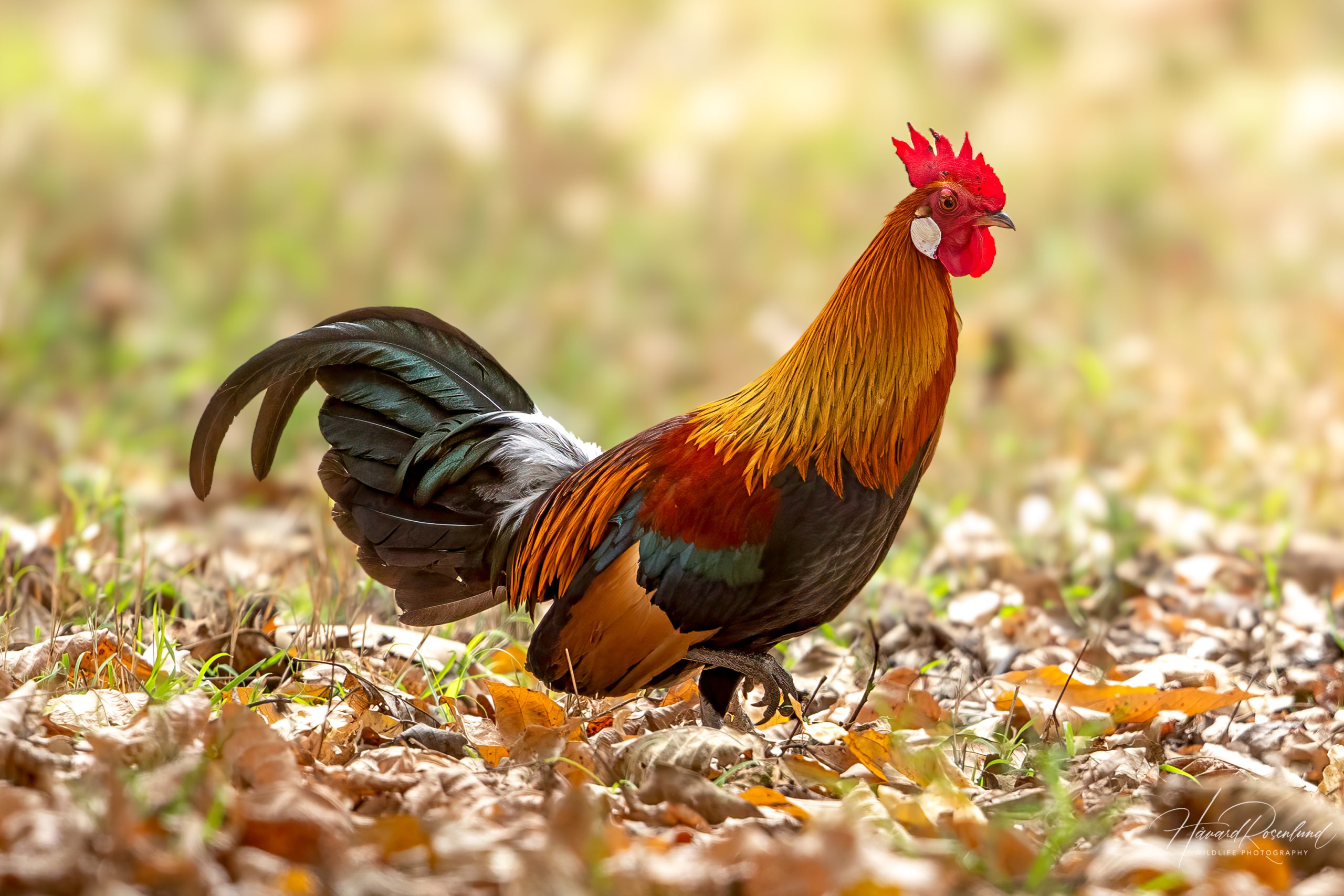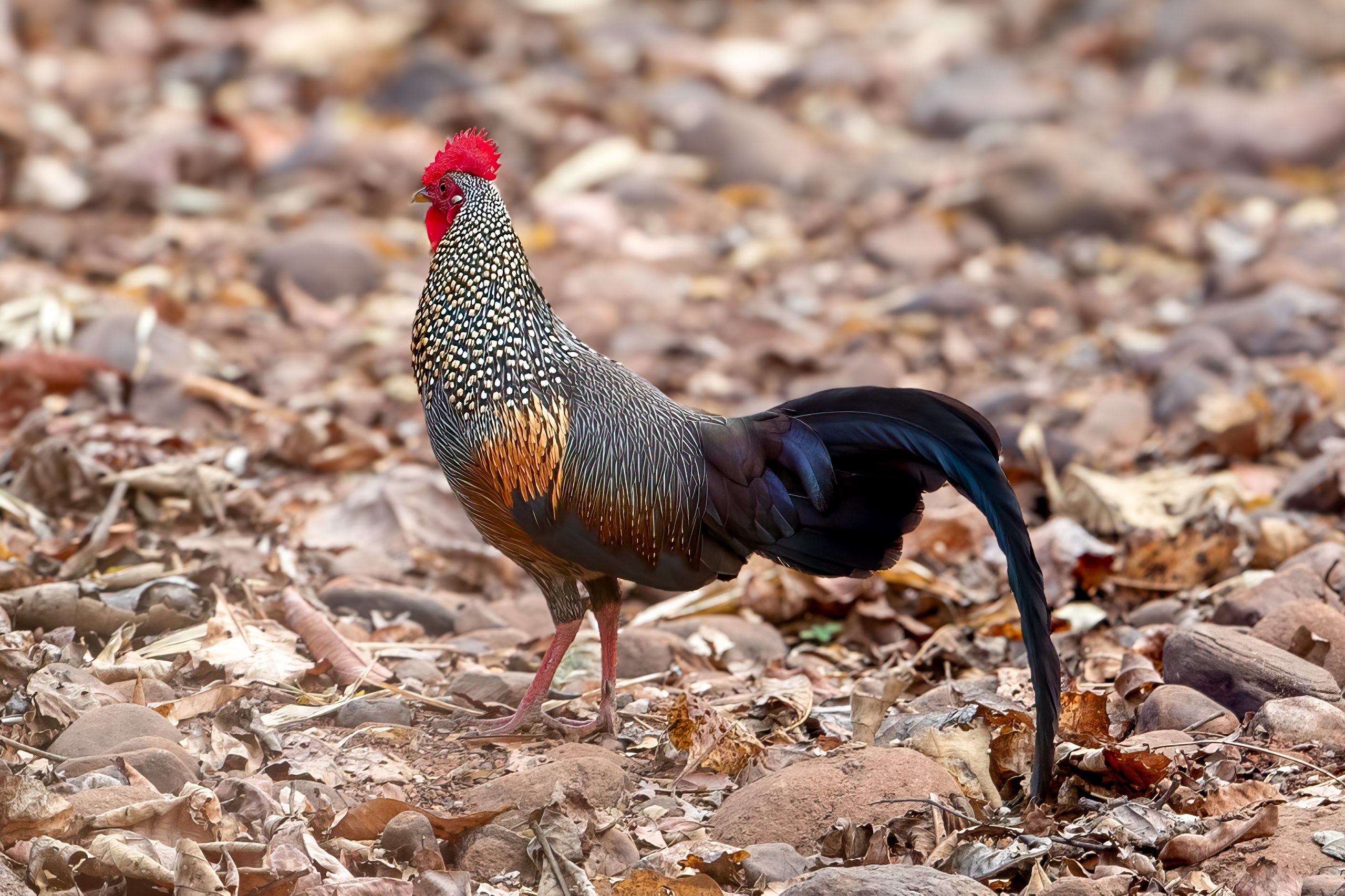Description
The red junglefowl (Gallus gallus) is a vibrant bird native to Southeast Asia, including countries like Thailand, India, Indonesia, and southern China. This species is the wild ancestor of the modern domesticated chicken. Adult males, known as roosters, are strikingly colorful, featuring iridescent plumage with a metallic sheen, a bright red comb and wattles, and long, arching tail feathers. They typically measure between 70 to 80 cm (28 to 32 inches) in length, including the tail, and weigh around 1.5 to 2 kg (3.3 to 4.4 pounds). Females, or hens, are more subdued in coloration, with a blend of brown and black feathers, which provides camouflage. Hens are smaller, measuring about 40 to 45 cm (16 to 18 inches) and weighing between 0.9 to 1.2 kg (2 to 2.6 pounds).
The red junglefowl differs from other species of junglefowl, like the grey junglefowl (Gallus sonneratii), primarily in plumage coloration and distribution. While the red junglefowl boasts a rich, red and golden hue, the grey junglefowl has a distinct grey and gold plumage with different feather patterns.
Diet & habitat
Red junglefowl inhabit a variety of forested environments, including tropical and subtropical forests, bamboo thickets, and secondary forests. They are often found at the forest edge and in areas with dense undergrowth. They are ground-dwellers and prefer habitats where they can forage for food and find cover from predators. Their diet is omnivorous, comprising seeds, fruits, insects, and small invertebrates. They exhibit a foraging behavior known as “scratch feeding,” where they use their feet to scratch the ground, uncovering food items such as insects and seeds buried in the leaf litter. They also consume a variety of plant material, including shoots, leaves, and small fruits.
Nesting
The breeding season for red junglefowl typically aligns with the rainy season, when food availability is high. Males engage in elaborate courtship displays, involving crowing and showcasing their vibrant plumage to attract females. They also perform a “tidbitting” behavior, where they pick up and drop food items in front of the female to entice her.
Females build simple nests on the ground, often hidden under dense vegetation or among roots and fallen leaves. The nest is a shallow scrape lined with leaves and feathers. A typical clutch consists of 4 to 8 eggs, which are incubated by the female for about 21 days. The chicks are precocial, meaning they are born with their eyes open and covered in down, and they are able to leave the nest within hours of hatching. They fledge in about 12 weeks, staying close to the mother for protection and learning to forage.
Domestication
The red junglefowl is historically significant as the progenitor of all domestic chickens (Gallus gallus domesticus). Domestication is believed to have started around 8,000 years ago in parts of Southeast Asia, particularly in regions where humans and junglefowl coexisted. The relationship likely began with humans exploiting the birds for food and feathers, leading to a mutualistic relationship where junglefowl benefited from human settlements providing food and protection from predators.
As human agriculture and settlements spread, so did domesticated chickens. They reached Europe, Africa, and the Americas through trade routes and exploration, adapting to diverse climates and becoming a global staple in both rural and urban areas.
Feral populations of red junglefowl and their domestic descendants can be found in many parts of the world, particularly on islands in the Pacific and Indian Oceans, as well as the Caribbean, where they were introduced by sailors. These feral birds often retain many wild characteristics, including plumage patterns and behaviors similar to their wild ancestors.
Status
The red junglefowl is currently classified as least concern on the IUCN Red List. However, the species faces threats from habitat loss, hunting, and genetic dilution due to interbreeding with domestic chickens. This hybridization can lead to the loss of pure wild red junglefowl genetic lines, which poses a challenge for conservation efforts.







